On December 7
“A gigantic fleet has massed in Pearl Harbor. This fleet will be utterly crushed with one blow at the very beginning of hostilities. Heaven will bear witness to the righteousness of our struggle.”
~Rear-Admiral Seiichi Ito
Chief of Staff of the Japanese Combined Fleet
============================================

1787 – In Dover, Delaware, the U.S. Constitution was unanimously ratified by all 30 delegates to the Delaware Constitutional Convention, making Delaware the first state of the United States.
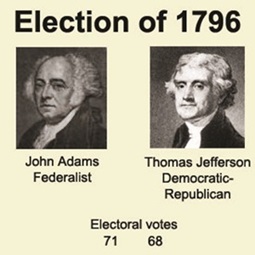
1796 – Vice President John Adams (71 electoral votes), defeated former Secretary of State Thomas Jefferson (68 electoral votes) to become the 2nd President of the United States.
According to the prevailing rules at that time – the formal position of running mate had not yet been established – so Jefferson became the Vice President.
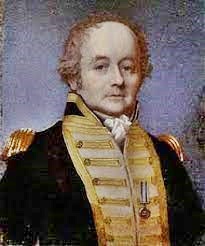
1817 – Vice-Admiral William Bligh died of cancer at the age of 63. He is best known for the mutiny on HMS Bounty, which occurred in 1789 when the ship was under his command.
Seventeen years after the Bounty mutiny, Bligh was appointed Governor of New South Wales in Australia, with orders to clean up the corrupt rum trade of the New South Wales Corps.
His brutal actions directed against the trade resulted in the “Rum Rebellion”, during which Bligh was placed under arrest on January 26, 1808 by the New South Wales Corps and deposed from his command.
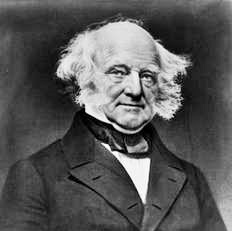
1836 – Vice President Martin Van Buren (170 electoral votes) easily defeated William Henry Harrison (73), Hugh L. White (26), Daniel Webster (14), and Willie Mangum (11) to become the 8th President of the United States.
All four of the losing candidates ran on the Whig Party ticket. The Whigs ran four candidates in different parts of the country in hopes that each would be popular enough to defeat Democrat Van Buren in their respective regions.
In that case, it would have been left to the House of Representatives to decide between the competing Whig candidates. Obviously, the flawed strategy failed.
The election of 1836 was the last until 1988 (George H.W. Bush) to result in the elevation of an incumbent vice-president to the nation’s highest office through means other than the president’s death or resignation.

1869 – American outlaw Jesse James committed his first confirmed bank robbery when he and brother Frank robbed the Daviess County Savings Association in Gallatin, Missouri.
The robbery netted little money, but Jesse shot and killed the cashier, Captain John Sheets, mistakenly believing him to be Samuel P. Cox, the militia officer who had killed “Bloody Bill” Anderson – one of the deadliest and most brutal pro-Confederate guerrilla leaders during the Civil War, and a man with whom Jesse and Frank had ridden as part of the infamous Quantrill’s Raiders.
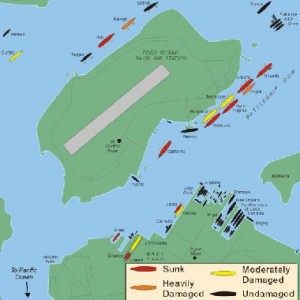
1941 – Pearl Harbor was not on a state on high alert. Senior commanders had concluded, based on available intelligence, there was no reason to believe an attack was imminent.
Aircraft were parked wingtip to wingtip on airfields, anti-aircraft guns were unmanned with many ammunition boxes kept locked in accordance with peacetime regulations. There were also no torpedo nets protecting the fleet.
And since it was Sunday morning, many officers and crewmen were leisurely ashore.
However, U.S. intelligence had decoded a message pointing to Sunday morning as a deadline for some kind of Japanese action. The message was delivered to the Washington high command more than 4 hours before the attack on Pearl Harbor.
But then came the first fatal mistake.
The message was not immediately forwarded to the Pearl Harbor commanders.
The second fatal mistake happened.
At 3:45 a.m. (Hawaiian time), a Japanese submarine was spotted off the harbor. The minesweeper USS Condor made the initial observation. Officers aboard the vessel took note of a periscope and relayed the message to the destroyer USS Ward.
Three hours later (6:42), the sub was found and sunk by the Ward, under the command of Lt. William W. Outerbridge.
Outerbridge’s radio reports were discounted by senior officers at naval headquarters despite his efforts to emphasize that there could be no mistake, sending a second report with more explicit detail:
“We have attacked, fired upon, and dropped depth charges upon submarine operating in defensive sea area.”
The third fatal mistake occurred.
At 7:02 a.m., two radar operators spotted large groups of aircraft in flight toward the island from the north, but, with a flight of B-17s expected from the United States at the time, they were told to sound no alarm.
At 7:55 a.m., all hell broke loose.
A Japanese dive bomber bearing the red symbol of the Rising Sun of Japan on its wings appeared out of the clouds above the island of Oahu. A swarm of 360 Japanese warplanes followed, descending on the U.S. naval base at Pearl Harbor in a ferocious assault.
The surprise attack struck a critical blow against the U.S. Pacific fleet and drew the United States irrevocably into World War II.
Much of the Pacific fleet was rendered useless: Five of eight battleships, three destroyers, and seven other ships were sunk or severely damaged, and more than 300 aircraft were destroyed.
A total of 2,400 Americans were killed and 1,200 were wounded, many while valiantly attempting to repulse the attack.
Japan’s losses were 30 planes, five midget submarines, and fewer than 100 men.
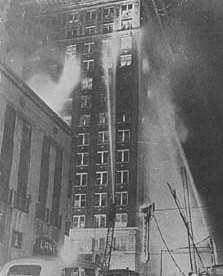
1946 – A fire at the Winecoff Hotel in Atlanta, Georgia, killed 119 people, the deadliest hotel fire in U.S. history.
The hotel’s steel structure was protected against the effects of fire, but the interior walls were combustible, and the building’s exit arrangements consisted of a single stairway serving all fifteen floors.

1963 – Instant replay made its debut during the Army-Navy football game in Philadelphia. The instant replay machine – the brainchild of director Tony Verna – weighed 1,300 pounds.
After technical hitches, the only replay that was shown was Rollie Stichweh’s touchdown. It was replayed at the original speed, with commentator Lindsey Nelson advising viewers, “Ladies and gentlemen, Army did not score again!”

1967 – The Beatles’ Apple Boutique officially opened its doors at 94 Baker Street in London.
It was not a success. The retail business lost money at an alarming rate and the shop was closed on July 30, 1968.

1967 – Otis Redding recorded (Sittin’ On) The Dock Of The Bay.
Redding wrote the first verse of the song on a houseboat at Waldo Point in Sausalito, California a short time after his appearance at The Monterey Pop festival.
The song went on to be his biggest hit although Redding didn’t live to see its release. He was killed three days later in a plane crash.
Whistling Factoid: The familiar whistling, heard as the song faded, was supposed to be a temporary thing. Otis had intended to return to the studio at a later date to finish the song so on this session, he whistled his way to the end.
But on the finished recording, the whistling you hear is not Otis at all. It was re-recorded as an overdub following Redding’s death by his bandleader Sam “Bluzman” Taylor.

1972 – Apollo 17, the last Apollo moon mission, was launched.
When Apollo 17 left its orbit around the Earth to begin its trajectory to the Moon, the crew took the photograph known as “The Blue Marble”. It is one of the most iconic images in human history.

1982 – The first execution by lethal injection took place at the state penitentiary in Huntsville, Texas.
Charles Brooks, Jr., convicted of murdering an auto mechanic, received an intravenous injection of sodium thiopental.
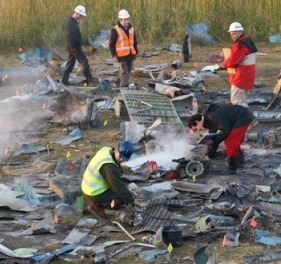
1987 – Pacific Southwest Airlines Flight 1771 crashed near Cayucos, CA, killing all 43 on board after David Burke – a disgruntled former employee of USAir, the parent company of PSA – shot his ex-boss traveling on the flight, then shot both pilots, a flight attendant, and himself.
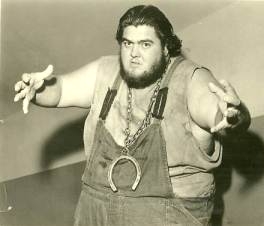
1989 – William Dee “Haystack” Calhoun, a gargantuan (640 pounds) wrestler who was one of the foremost drawing cards during the 1950s and 1960s, died from complications of diabetes at the age of 55.

1993 – Colin Ferguson opened fire on a Long Island Railroad commuter train from New York City, killing 6 and injuring 19.
Other train passengers stopped the perpetrator by tackling and holding him down. Ferguson later attributed the shooting spree to his deep-seated hatred of white people.
In the resulting trial, which took place in January and February 1996, Ferguson – acting as his own attorney – opened by claiming that he was not the shooter. He argued that a white man had stolen his gun and shot the commuters, then pinned the crime on Ferguson.
He later changed his story, stating that a man who shared Ferguson’s name and facial features was the real killer. When Ferguson asked nearly all of the surviving victims, in turn, to identify the killer under oath, they each pinned the blame squarely on him.
After the judge denied Ferguson’s request that President Bill Clinton and Governor Mario Cuomo testify, Ferguson decided to forego his own right to testify.
On February 17, 1996, the jury convicted Ferguson of 6 counts of murder and 22 counts of attempted murder.
He received six life terms and is not eligible for parole.
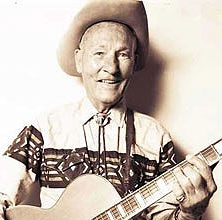
2004 – Jerry Scoggins died of natural causes at the age of 93.
I realize most of you have never heard of him but since anyone over the age of 50 must remember The Ballad Of Jed Clampett, the theme song to the 1960s sitcom The Beverly Hillbillies, I thought some of you might like to see what he looked like.
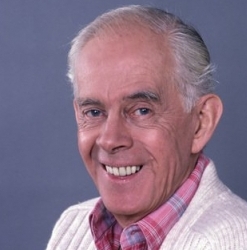
2011 – Actor Harry Morgan died of natural causes at the age of 96.
Morgan was a featured cast member in several major films, including The Ox-Bow Incident, High Noon, Inherit The Wind, and The Shootist before turning to television: December Bride, Pete and Gladys, and best known for two roles: Officer Bill Gannon on Dragnet and Colonel Sherman Potter on M*A*S*H.

2011 – Ousted Illinois governor Rod Blagojevich, having been found guilty on 17 counts of corruption – including trying to sell the U.S. Senate seat vacated by President Barack Obama – was sentenced to 14 years in prison at FCI Englewood in Colorado.

2014 – Actor Ken Weatherwax (best known for having played Pugsley Addams on The Addams Family) died of a heart attack at the age of 59.

2016 – Greg Lake died of cancer at the age of 69.
Lake first came to prominence as a founding member of King Crimson, singing and playing bass on the group’s debut album, In The Court Of The Crimson King.
He later co-founded ELP, alongside keyboard player Keith Emerson and drummer Carl Palmer.
As a member of ELP, Lake wrote several hit songs including Lucky Man and From The Beginning. Both songs entered the UK and U.S. singles charts.
As a solo artist, Lake recorded one of the UK’s most enduring Christmas hits. I Believe In Father Christmas reached #2 in 1975.
Compiled by Ray Lemire ©2023 RayLemire.com / Streamingoldies. All Rights Reserved.
